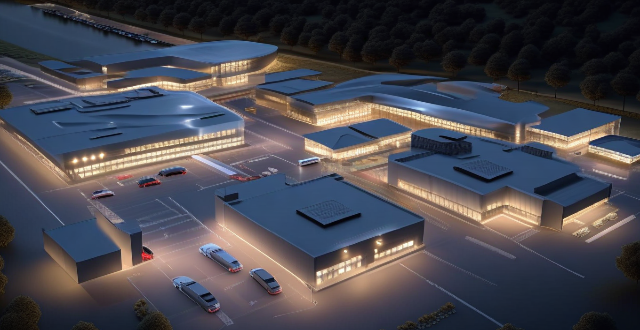The impact of technology on automotive exterior design is significant. Enhanced aerodynamics, advanced lighting systems, incorporation of advanced materials, integration of smart features, and digitalization of manufacturing processes are some ways technology has influenced the design of car exteriors. These advancements have led to more efficient, stylish, and functional vehicles on our roads today.

Impact of Technology on Automotive Exterior Design
The use of technology has significantly impacted the automotive exterior design in several ways. Let's delve into the details:
1. Enhanced Aerodynamics
Technological advancements have allowed designers to create more aerodynamic vehicles. This is achieved through the use of advanced simulation software and wind tunnel testing, which helps in understanding airflow around the vehicle. As a result, modern cars have sleeker designs, reduced drag coefficients, and improved fuel efficiency.
Key Points:
- Use of advanced simulation software
- Wind tunnel testing for understanding airflow
- Sleeker designs with reduced drag coefficients
2. Advanced Lighting Systems
LED lighting technology has revolutionized the way vehicles are illuminated. It offers better visibility, longer lifespan, and energy efficiency compared to traditional lighting systems. Additionally, LED lights can be designed in various shapes and sizes, allowing for unique and attractive lighting designs on vehicles.
Key Points:
- LED lighting technology
- Better visibility and energy efficiency
- Unique and attractive lighting designs
3. Incorporation of Advanced Materials
Technology has enabled the use of advanced materials like carbon fiber, aluminum, and high-strength steel in automotive exterior design. These materials not only reduce weight but also improve structural integrity and crashworthiness. Moreover, they allow for greater flexibility in design due to their malleability and strength characteristics.
Key Points:
- Use of advanced materials like carbon fiber, aluminum, and high-strength steel
- Reduction in weight and improvement in structural integrity
- Greater flexibility in design due to material characteristics
4. Integration of Smart Features
Technology has facilitated the integration of smart features into automotive exterior design. This includes features such as automatic door handles, adaptive grilles, and active aero elements that adjust based on driving conditions. These features not only enhance the aesthetic appeal but also improve functionality and performance.
Key Points:
- Integration of smart features like automatic door handles, adaptive grilles, and active aero elements
- Enhancement of aesthetic appeal and functionality
- Improvement in performance based on driving conditions
5. Digitalization of Manufacturing Processes
The digitalization of manufacturing processes has led to precise and accurate production of automotive exterior components. Technologies like 3D printing and computer-aided design (CAD) enable designers to create complex shapes and structures with ease. This results in vehicles with intricate designs that were previously impossible to manufacture using traditional methods.
Key Points:
- Digitalization of manufacturing processes through technologies like 3D printing and CAD
- Precise and accurate production of exterior components
- Creation of intricate designs that were previously impossible
In conclusion, the use of technology has had a profound impact on automotive exterior design by enhancing aerodynamics, incorporating advanced lighting systems, using advanced materials, integrating smart features, and digitalizing manufacturing processes. These advancements have led to more efficient, stylish, and functional vehicles on our roads today.